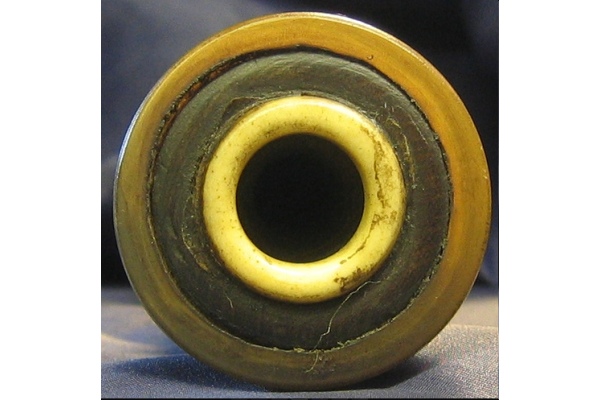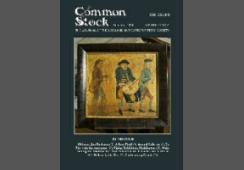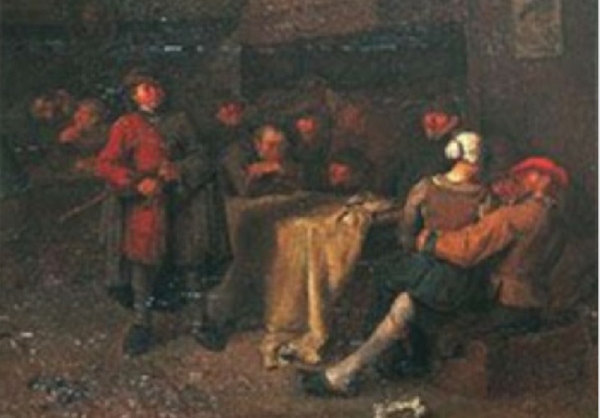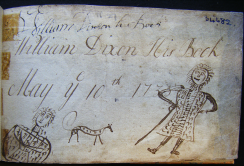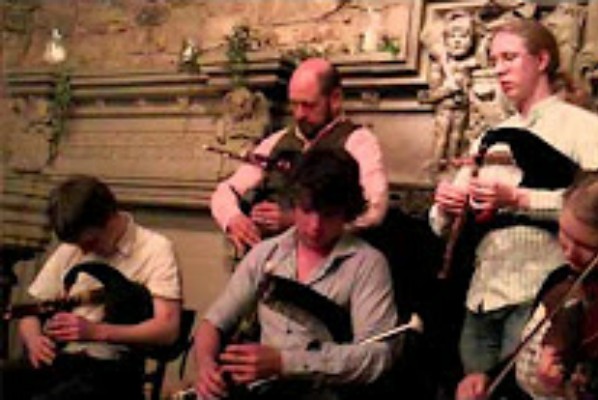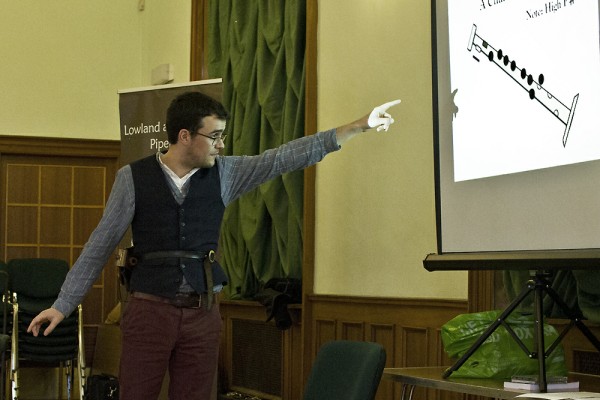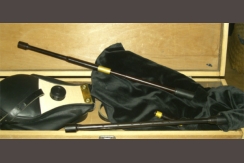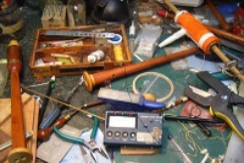Jock Agnew
These suggestions may be ‘Old Hat’ to experienced pipers, and I lay no claim to their originality. However those who are fairly new to the bellows-piping world may find some useful.
Reeds falling into the bag during transit.
This might happen to either chanter or drone reeds, and it is a fiddly (and sometimes lengthy) business teasing them back out of the bag. Here is a simple but effective preventative measure:
Take a tail of the reed wrapping – or add more wrapping – and trap it in the stock.

Protecting the reed tongue when re-placing the drone.
When putting the drone back in the common stock it is almost inevitable that the drone will be held at an angle.
Keep the reed tongue away from the centre of the stock, in case it is snagged and damaged by the far edge of the socket.

Chanter location
When returning the chanter to its stock after inspecting the reed or cleaning the bore, it is helpful if the finger holes are instantly in the most comfortable position.Mark the chanter and stock, either temporarily e.g. with coloured tape, or more permanently, to show the best location.
 ;
;
Replacing a reed
When a reed is removed for cleaning etc., it can easily be relocated in its original position to maintain the correct tuning.
Before removal, measure from the reed tip to the chanter, (and for a permanent record write the measurement on the blade of the reed).
 ;
;
Positioning the bag
A slight anti-clockwise twist when plugging the blow-pipe into the bellows tube will help push the bag up into the armpit.
 ;
;
Reed protection.
When removing the chanter (or drone) from its stock, the risk of any sudden jerky movement which may damage the reed, is reduced if the thumb of the hand holding the chanter/drone steadies the stock until the chanter/drone and reed are safely clear.
With a split stock and chanter kept separately in the pipe box it is advisable to fit a dust cap to prevent any object (such as hemp, pencil etc.) finding its way in and damaging the reed.
Always hold the chanter securely while connecting the bellows or tuning the drones – this prevents any chance of the chanter falling out and the reed becoming damaged.
Air Loss. To detect a gradual development of air loss and leakage try holding a single steady note on one bag-full of air (i.e. not topping up with the bellows) for as long as is physically possible while counting the seconds. At a later date do the same test and compare times.
Security. If the pipes are left in the car, it might pay to leave the pipe box open with the pipes partly assembled. It may deter any prospective thief who is probably in a hurry and not prepared to assemble the pipes and close the box before making off.
